It’s no secret that in today’s world of health information technology, patient health data privacy and security are top concerns. Technology like remote patient monitoring (RPM) is changing the way patients and providers alike understand the quality of care that can be delivered in the home.
But with this new influx of remote patient monitoring devices and the data they transmit, a new landscape of security threats has emerged. As data breaches become more frequent and the challenge of protecting our patients’ most sensitive information has never been greater, it is essential to evaluate RPM vendors on their ability to protect your organization’s valuable patient data.
For a vendor to be a successful partner to your organization, they must reassure you that they can provide the necessary protection of patient health data, which is a major part of the service they offer.
This article will help you evaluate your RPM vendor’s commitment to data security—and ultimately, it will help you protect your organization from costly breaches.
The Importance of Data Security in the Healthcare Industry

Patient data security remains vital in the healthcare industry for many reasons. Below are some of the reasons that data security is essential for your healthcare organization:
1. Enhances Patients Trust
Trust is integral to a successful healthcare organization. Patients must trust their providers to offer the best care possible. Patients must also trust that their healthcare organizations handle sensitive data like their RPM reports securely.
When a healthcare organization cannot protect patient health information, patients will lose trust in the organization, and ultimately, they may leave that organization for another one.
Through better security systems, medical providers can demonstrate their ability to protect patient data, thus building up patients’ trust and making a remote patient monitoring program successful.
2. Prevents Costs of Data Breaches
The costs associated with data breaches are significant for medical providers, health systems, and physician practices.
In a recent IBM report, healthcare organizations estimated that the average cost of a breach is $6.4 million for small practices and much more than that for larger hospitals and health systems.
These costs include determining what information was breached, how to notify those affected, credit monitoring services for those affected, legal fees associated with the liability of the incident, and the cost of fines.
Breaches also impact your organization’s reputation, which is priceless.
3. Protects Patients’ Personal Information and Health Data
HIPAA regulations require that every healthcare organization protect patient information at all times.
This information may include a patient’s condition, treatment, medication history, health insurance information, and billing records as per HIPAA guidelines.
Healthcare organizations must ensure that this information is safe at a “reasonable and appropriate security standard.” Remote patient monitoring vendors are held to that same standard of trust.
Patients expect their healthcare providers to protect their personal health information with the same care they use to treat them every day.
An RPM vendor who can demonstrate their ability to protect patient information helps build a successful relationship with your organization. They will, in turn, allow you to provide patients with the best possible healthcare services.
4. Ensures Compliance
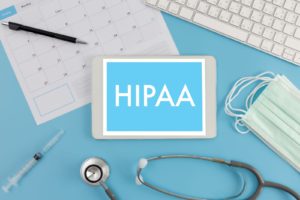
HIPAA regulations also require that your healthcare organization prove its information security compliance annually.
By requiring proof of Compliance, HIPAA is ensuring that healthcare organizations are always aware of their ongoing responsibility to protect patient data.
5. Reduces Liability Costs
Patient data breaches can often lead to lawsuits against your organization.
When patients lose control of their personal information, like with a data breach, they may sue your organization for damages related to the violation.
Insurance companies typically consider these types of lawsuits “high-risk” and will often increase your premiums or refuse coverage based on such claims.
To avoid this, you need to ensure that your organization is compliant with HIPAA, meets all other necessary criteria, and can prove that it protects patient health data.
If you choose an RPM vendor who understands the importance of data security, you will be less likely to experience lawsuits related to patient data breaches.
6. Increases Patient Satisfaction

Protecting patient data leads to increased satisfaction by improving patients’ level of trust in your organization.
Patients will be more likely to recommend you as a healthcare provider if they understand that you are committed to protecting their information at all times.
7. Enhances Your Brand Reputation
Reputation is a valuable asset to any patient care organization. You can avoid negative press related to a patient data breach by ensuring the necessary security protocols are there to begin with. That will enable you to maximize your brand’s value and maintain your good reputation.
A reputation for patient privacy is one of the most important aspects of any healthcare organization because it demonstrates your ability to safeguard this sensitive information.
This helps patients choose you as their top choice for healthcare services based on their trust in your organization.
8. Provides Patients With Secure Data Access
One of the most important aspects of patient data security is to ensure that patients can access their data whenever they want.
This includes medical history, billing statements, and other relevant information that will help them get the treatment they need and ensure ongoing patient adherence to treatment plans.
Patients expect you to provide them with secure access to their personal information. It is also an essential part of building a successful patient-provider relationship, which can be especially beneficial if they are looking for new healthcare services in the future.
9. Increases Patient Engagement & Patient Adherence
Protecting patient data goes beyond just giving them secure access to their records. By safeguarding patient data, you demonstrate that you care about the privacy of your patients and that you are willing to go above and beyond for them.
This leads to increased engagement and participation with your organization, which leads to higher quality services for you and all of your patients.
What should I look for when evaluating an RPM vendor?
When selecting a vendor to offer remote patient monitoring services, consider the following factors.

1. Willingness to Partner with Your Organization
Healthcare organizations increasingly rely on health IT vendors for process enhancement, operational improvements, and even new streams of revenue. Therefore, you must choose a remote patient monitoring vendor with goals that align with those of your healthcare organization.
When your healthcare organization is working with a vendor that does not prioritize your data security, they are less likely to find ways to integrate their service into your workflow.
A vendor wants to know that they can rely on your organization’s practices for them to provide an effective service. Thus, it will be beneficial to find a vendor who wants to partner with you when it comes to data security.
At HealthSnap, the philosophy is to offer a service that patients love, that nurses don’t mind, and that doctors don’t hate.
2. Demonstrate Security Measures
Your organization should select an RPM vendor that demonstrates a long-term commitment to protecting your patient’s health information. This includes being transparent about the security measures to ensure safe use, handling, and storage of data.
Ideally, an RPM vendor will be both HITRUST and HIPAA compliant. They are both important and separate entities and carry unique security measures in relation to each other. Securing a partnership with an RPM provider that is compliant with both entities ensures the highest standard of patient data protection.
Perhaps most important is the RPM vendor’s ability to integrate securely with your EHR system (shameless plug: HealthSnap integrates with over 80+ EHRs).
3. Good Track Record
A vendor’s track record is another important consideration when evaluating your RPM options. You will want to choose a vendor who has experience maintaining secure systems and practices for handling sensitive data, especially patient reports.
With a reputable vendor with a strong track record of protecting your organization’s sensitive patient data, you will rest easy knowing that they have the skills and expertise necessary to ensure that this information is secure.
4. Remote Patient Monitoring Available 24/7
At HealthSnap, we understand that chronic condition management never takes a day off, and sensitive patient information is a hot commodity on the black market in today’s digital world.
Thus, you must select an RPM vendor with a robust security system. Also, they should be available around the clock to address any security concerns should they arise.
An RPM Vendor who is available 24/7 will give you peace of mind that your data is being protected at all times.
5. Operating Location
You should select an RPM vendor with an operating location within the U.S.A. While overseas vendors can of course follow stringent data security standards, you will want to ensure that your vendor’s information systems are within the same jurisdiction of HIPAA regulations as your healthcare system.
6. Compliance With Regulatory Agencies
It is also vital to select an RPM vendor that shows compliance with HIPAA guidelines on protecting patient health information. There are various certifications that your vendor should have, such as the HITRUST certification, which will help you feel comfortable about allowing them to transmit health data between patients and providers.
7. Data Collection Security Measures
To protect your organization from another large-scale health data breach, you must ensure all of the patient information collected by your RPM vendor is securely encrypted
Patient information should only ever get decrypted when necessary for business operations, including transmitting protected information over a secure, encrypted network.
8. Data Deletion Security Measures
If a vendor is no longer providing service to your organization, it is crucial that all patient health information stored on their systems gets deleted and electronically “shredded”.
With a secure data deletion system, you can have peace of mind knowing that the vendor will not mishandle or sell your patient information at any time.
9. HITRUST Security Clearance
According to the HITRUST Alliance, a coalition of organizations working toward protecting sensitive health information, obtaining a HITRUST certification is “the market’s gold standard for information security.”
HIPAA-covered entities should only work with RPM vendors that have been transparently evaluated and received a HITRUST security clearance based on their exceedingly strong ability to keep data safe. This is the ultimate way to confirm that your health records will be secure.
The Consequences of Patients’ Data Breach

Many people give their health information to doctors and health care providers and assume that it will be protected. Patients trust the health systems they share their personal information with, but in the current cybersecurity landscape, there is more of a chance for data loss than ever before.
Every day healthcare industry professionals face new threats from hackers, online criminals, and thieves determined to break into their systems and steal records containing personal information. A breach of patient data can lead to various consequences, including:
1. Identity Theft/Fraud
When your remote patient monitoring vendor does not take the necessary steps to secure your patient records, you can almost guarantee that your information will get compromised. Once this happens, these criminals can use the information to open lines of credit or take out loans in your patients’ names.
It might be challenging to detect that you are a victim of identity theft if your medical records get stolen. Thieves can discreetly use the information they find in these records to change the address listed on an existing account, open credit card accounts, or worse.
According to the U.S Department of Health and Human Services, data breaches involving unsecured protected health information have led to an increase in fraud or identity theft by 19% over the past five years.
With around 80 million individuals having their data stored by companies in the digital space, it is no surprise that there has been an increasingly large influx of accounts being hacked and used fraudulently every year.
2. Payment Fraud/Theft
When your records get stolen, criminals can use the information to claim reimbursement. Even if you have implemented a health insurance plan with co-pays or deductibles, it is still possible for fraudsters to file false claims, and healthcare plans/providers will need to reimburse them.
3. Medical Identity Theft
Medical identity theft occurs when a criminal uses your medical records to take on your identity and receive medical care or services under your name. This type of fraud is difficult to detect because the perpetrator can use their victim’s information to fool health care providers, or they might even change their name to reflect yours.
When a criminal changes their name to look like yours, it can be challenging to prove that you are not the person who received medical care or services from a health care provider.
These criminals could receive unnecessary tests and treatments, which might result in a significant increase in your insurance premiums—especially if a criminal attempts to obtain prescriptions and files multiple claims with insurers.
4. Loss of Medicaid/Medicare or Other Government Benefits
If an individual loses control over their medical records, it could result in the loss of government benefits. The Social Security Administration cannot qualify you if they do not have these records, which would make it difficult to access government programs like Medicare and Social Security.
5. Other Challenges
Patient data security is essential when evaluating your RPM vendor. For example, if you were the victim of a data breach and your health care records got stolen or otherwise compromised, it could be challenging to find work and put your life back together again.
If you feel your medical information got compromised or stolen, contact your insurer immediately and request a new policy number.
You should also file a complaint with the Federal Trade Commission (FTC) and request an investigation into fraudulent claims and credit card accounts and check your credit reports.
Best Practices for Preventing Medical Identity Theft

Medical identity theft is a serious risk, and if you lose your medical data, it can affect you or someone in your family. If one of the following scenarios occurs, you need to be aware that this type of fraud might be happening:
- When someone uses your name and personal information to purchase health care products or services
- When an unauthorized person taps into your existing accounts
- When someone opens new accounts in your name or the name of another person that is closely associated with you, like your spouse or child
Consider these practices to protect your health care information better:
1) Monitor Your Accounts
Check bank, credit card, and utility statements regularly to identify suspicious activity. If you find anything that doesn’t seem right, report it immediately.
You can report to a credit bureau that you have lost your identity and request a fraud alert or freeze your credit.
2) Request a Free Credit Report Every Year
You should have access to one free copy of your annual credit report from each of the three major bureaus in America. Get your credit reports from all three organizations at once for added convenience. Doing that will help you protect your credit from identity thieves.
3) Use Strong Passwords
Choose complex and random combinations of letters, numbers, and symbols to secure your accounts. This will make it harder for potential identity thieves to access your sensitive information online.
When you have a weaker or frequently reused password, it might be easier for someone to guess your password by using certain key combinations, which you could easily find on the internet. They will use this information to access your accounts.
- Do not choose an obvious password, such as your name or date of birth.
- Avoid using simple passwords that others can guess. For example, “password123” is easy for someone else to guess and can potentially reveal sensitive information about you. Also, avoid choosing easy-to-guess words like “password” or “ID.”
- Never share your passwords with anyone.
- Use different passwords for each of your accounts, including those used for online health care applications or medical software programs.
4) Discard Unnecessary Paperwork

Part of the HIPAA privacy rule requires that providers take appropriate precautions to prevent unauthorized access to private health information.
One way your doctors can do that is by using a secure disposal method, such as shredding documents you no longer need rather than simply tossing them in the trash.
5) Sign Up for Fraud Alert Notifications
Contact your bank or credit card company immediately if you suspect that someone is operating your unauthorized accounts in your name. A fraud alert will help you stay aware of your account status in real time, preventing the company from issuing new credit in your name without your consent.
6) Change your passwords and PINs regularly

You must change your passwords and PINs every 12-18 months. This is to prevent potential identity thieves from gaining access to your accounts if they learn the password or code you use for them.
If you do not change your passwords and PINs regularly, an identity thief will be able to easily gain access to your accounts, which could lead to runaway medical costs.
7) Do Not Respond to Unsolicited Requests
Never offer your social security number, credit card number, or online passwords to any person or company that you don’t know. Identity thieves often pose as representatives of healthcare providers and banks and request this information over the phone.
They can then use the information to access and drain your bank accounts or apply for new credit in your name.
8) Get a Copy of Your Medical Records
You can request a free copy of your medical records from your doctor’s office at any time. This paperwork is helpful if you want to change pharmacies or receive treatment at another facility.
You can request a copy of your blood pressure readings, cholesterol, and glucose readings from your doctor’s office at any time- or access them through a secure remote patient monitoring portal such as HealthSnap’s. This information helps you monitor changes in your health over time.
9) Use Caution When Sharing Health Care Information
Part of the HIPAA privacy rule requires you to give written authorization before your provider can share your medical records with any third party. That means that anyone who calls or comes in to see the doctor without an appointment cannot receive this information.
You should limit how much personal health information you disclose to others, including your employer or anyone who has access to your medical records.
Key Components of Remote Patient Monitoring Services

An effective remote patient monitoring program has many facets. They include:
1. A Patient-Facing Virtual Care Platform
An all-in-one integrated virtual care platform like HealthSnap gives patients everything they need to manage their chronic conditions from home. The platform should be configured to easily display historical patient data that is collected from readings taken on connected remote patient monitoring devices.
2. Hospital Side Software
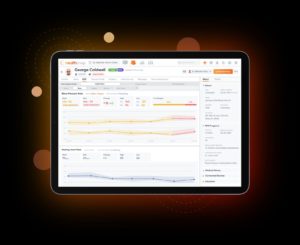
Hospital-side software is also key for securely managing patient information. The platform can get installed on tablets, workstations, laptops, or smartphones depending on what works best for your team.
Say goodbye to the days of hand-written patient logs, and use remote patient monitoring software to empower your chronic disease management teams and scale your practice.
With remote patient monitoring software, every time your patient takes a reading, that physiological data is transmitted to your care team in real time. HealthSnap’s proprietary AI-driven software is even able to detect patterns in this data, offering alerts and notifications to the care team when a patient’s health status might be at risk of a catastrophic event.
For example, if patient John Smith has been taking his blood pressure with a connected remote patient monitoring device, and his blood pressure has been trending up for a certain amount of time, that will ping your care team to reach out to this patient and get them into the office for a visit before something like a stroke or heart attack occurs.
3. Secure Cloud Platform
The platform must also be secure and HIPAA-compliant, and ideally, HITRUST certified, to ensure proper maintenance of patient information. This cloud environment provides easy access to all patient data. It also lets the doctor or caregiver monitor at risk patients remotely, allowing for a more proactive care approach as opposed to an episodic one.
Remote monitoring helps at risk patients with chronic conditions to remain independent for much longer. It’s an effective way of keeping them healthy, happy, and safe in their residences- offering care delivery in the place where chronic conditions truly play out.
4. Connected Remote Patient Monitoring Device (RPM Devices)
The system works on the principle of sending wireless data from a patient’s medical device directly to their provider.
With HealthSnap, there is zero friction in the setup process. The remote patient monitoring devices are drop-shipped directly to the patient’s home and preconfigured to link to their patient profile. All they have to do is take the device out of the box, insert the batteries included, and take a reading as they normally would.
HealthSnap’s remote patient monitoring devices are cellularly enabled, as opposed to Bluetooth or WiFi, allowing for older patient populations to get set up with ease. No app downloads or logins are required- just take your blood pressure or glucose reading as you normally would, and that physiological data will be at the provider’s fingertips.
5. Mobile Phone (Optional)
Some RPM platforms also use a mobile phone as a communication tool alongside their remote patient monitoring devices.
RPM software like HealthSnap bridges the gap between healthcare providers and patients. It allows doctors to undertake continuous monitoring of their patient’s health remotely in real-time. This helps care teams manage chronic care conditions for at-risk patient populations with ease.
What Remote Patient Monitoring Devices Are Ideal?
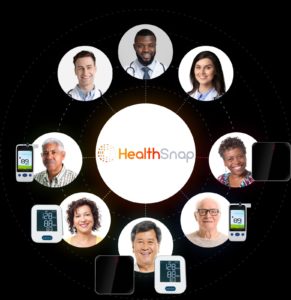
There are a variety of devices that are ideal for remote chronic care management; the choice depends on the type of technology that would work best for an individual’s needs. It also depends on what conditions you’re hoping to manage within your patient populations. Some more frequently used remote patient monitoring devices include:
1. Weight Scale
Cellular scales enable physicians to monitor a patient’s weight and determine if there is any significant weight gain or loss. Weight gain or loss can indicate lifestyle habits or other potentially serious health conditions, such as a secondary heart attack.
They are also helpful for patients who need to maintain a certain weight threshold to control related conditions such as high blood pressure or diabetes.
2. Blood Glucose Monitor
Blood glucose monitors are important because they allow physicians to monitor trends in blood sugar levels on an ongoing basis, which is particularly helpful for patients with diabetes.
If a diabetic patient is taking their blood sugar readings regularly, and the data is showing that their blood sugar is getting higher, this offers important insight into the patient’s condition and can offer a real-time cue to the care team to get that patient into the office to see what is causing this trend.
3. Blood Pressure Cuff
A connected blood pressure cuff is one of the most important remote patient monitoring devices. Patients that deal with chronic conditions such as heart failure and uncontrolled hypertension (high blood pressure) can simply take a blood pressure reading on the device and have that data immediately transmitted to their care team.
Patients can effortlessly get connected to their care team by using a cellularly enabled device like a blood pressure cuff that sends medical professionals information on the patient’s vital signs in real time. This helps monitor changes in blood flow and pressure levels, which can indicate other health conditions such as kidney failure or cardiac arrest.
Be sure to look for rpm vendors that use validated blood pressure monitors!
4. Thermometer
A thermometer allows medical staff to monitor a patient’s body temperature. If it comes out that the patient has an infection, physicians can prescribe antibiotics without the need for those patients to come to the actual health care facility.
Many different factors can change and affect body temperature, so taking these measurements remotely with connected RPM devices is helpful.
5. Pulse Oximeter
Another way to use remote patient monitoring devices to keep care teams aware of a patient’s vital signs is with the use of a connected pulse oximeter. Pulse oximeters are helpful for individuals with asthma, chronic obstructive pulmonary disease (COPD), congestive heart failure, heart disease, and several other health conditions that cause poor circulation in the body.
A pulse oximeter allows insight into a patient’s blood oxygen levels, which is essential for remote cardiac monitoring.
Is Remote Patient Monitoring Worth It?
The short answer is YES – remote patient monitoring is more than worth it. This is the case for both patients and providers. There is tremendous value in leveraging artificial intelligence into your chronic disease management protocols. The following are some of the benefits of remote patient monitoring that supports value-based care delivery models:

1. Reduced Costs
Remote patient monitoring programs can reduce or eliminate the need to transport and visit patients in hospitals and clinics.
Sometimes, because of transportation and staffing limitations, patients fall through the cracks and don’t receive the care they need. As we said- chronic conditions don’t take days off. Thankfully, neither does remote patient monitoring.
In addition, using connected RPM devices to proactively track a patient’s vital signs reduces the occurrence of catastrophic health events which are costly for health systems, patients, and health plans.
2. Increased Quality of Care
Remote patient monitoring allows healthcare professionals to be more proactive rather than reactive in their approach. It helps them monitor patients regularly and act quickly if and when conditions change.
This type of proactive approach provides an opportunity for better healthcare delivery. That’s because it prevents issues that could require hospitalization or other costly treatments.
3. Improved Efficiency in Care Delivery

Remote patient monitoring reduces the time spent on routine tasks such as manually logging blood pressure or glucose readings. That allows healthcare professionals to focus more of their efforts on other crucial tasks.
Patients often become disengaged from their care plan as time passes. Perhaps they are feeling better day-to-day, and become lax with their medication management and home monitoring. That is why remote patient monitoring devices can bridge the gap, allowing patients to feel more connected to their health care providers. The providers, in turn, are armed with continuous real-time health data about patients who may otherwise fall through the cracks and avoid routine checkups. A true win-win.
4. Improved Patient Outcomes
Remote patient monitoring can improve chronic condition outcomes in several ways.
RPM devices allow clinicians to constantly share patient data with medical staff working across departments. It will enable everyone on that patient’s care team to collaborate and provide data-driven, proactive care when and where patients need it most.
Also, remote patient monitoring programs allow for patient education, providing easy-to-access insight into their health data that perhaps they hadn’t seen before.
Remote patient monitoring devices can empower patients to take control of their health data and lifestyle choices, ensuring that they follow their treatment plans and receive the best possible care.
5. Clinical Capabilities

New remote patient monitoring technologies, such as cellular-enabled and pre-configured health devices, allow patients to really get involved with their care plan.
Say our hypothetical patient John Smith loves his Apple Watch. Remote patient monitoring vendors like HealthSnap can seamlessly integrate the data collected on those third-party devices, and allow John Smith’s providers to see his vital signs from a full day of wear in an actionable format.
6. Improved Patient Compliance
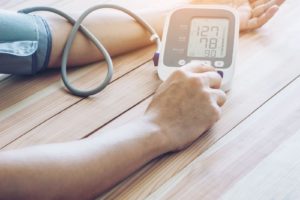
Using remote patient monitoring can greatly improve patient compliance.
A remote patient monitoring system offers health care providers ongoing patient data to use when determining the need to adjust therapies accordingly and modify their treatments when necessary.
Many people do not follow through with their treatment plans because of the inconvenience or inability to physically get themselves to medical clinics. This could be due to a lack of reliable transportation, or mobility issues. Unfortunately, this results in less effective treatment plans that are more episodic in nature.
7. Improved Patient Satisfaction
Let’s talk about patient satisfaction scores. People are generally happier when they do not have to leave their homes to visit medical facilities, especially if traveling puts them at risk of pain or inconvenience.
A remote patient monitoring program reduces the need for transportation costs. It also improves the overall quality of life for patients who have been diagnosed with chronic conditions.
With pre-configured, cellularly-enabled devices, that patient satisfaction only grows as there will be no need to call your grandchild and ask them how the heck to connect to WiFi.
8. Decreased Patient Readmissions
Remote patient monitoring programs allow for a proactive approach to chronic condition management, leading to fewer hospital readmissions overall.
Patient readmissions result in billions in health care costs and can be reduced if hospitals use remote patient monitoring devices to monitor patients after they leave the facilities.
This helps ensure that their conditions do not worsen while at home, requiring them to return to the hospital or medical facility for treatment only when absolutely necessary.
For all the reasons above, it’s evident that remote patient monitoring is worth your while.
Choose HealthSnap’s Integrated Remote Patient Monitoring Platform for Your Chronic Condition Management Needs

In summary, while data security concerns are valid in the digital health world, the right RPM vendor can alleviate those concerns and empower your care team to deliver proactive care to at-risk patient populations.
At HealthSnap, We Protect Your Data Like It’s Our Own
Not only do we build world-class features, but we also have a laser focus on building a secure virtual care platform to house your data.
Top Security & Privacy Features
The promises below have been part of HealthSnap from the beginning. Everyone at HealthSnap is committed to protecting our customers and patients.
Physical Security
We are hosted on Amazon Web Services (AWS) who provides robust, physical data center security and environmental controls.
Encryption
We enable encryption of sensitive data both at rest and in transit over public networks.
Data Usage
We don’t mine or access your data for commercial purposes and never will.
Data Privacy
We only use customer data to provide the service; we don’t look into your account without your permission.
Data Recovery
We regularly back up your data and provide a maximum 24-hour RTO and RPO.
Data Ownership
Your data 100% belongs to you.
Database Security
We host your data in its own secure database.
Integrated Services
We use OAuth2 to securely authorize other connected platforms and do not store your username or password for those services.
Privacy & Safety Features
We allow you to turn on and off privacy-impacting features to meet your needs.
Certifications
HealthSnap maintains multiple 3rd party certifications for security and privacy.
HITRUST
HealthSnap is proud to have received its HITRUST certification in January 2021. As the market-leading security, privacy, and compliance assessment and report, achievement of HITRUST CSF® Certification not only demonstrates that HealthSnap is taking the most proactive approach to data protection and risk mitigation, but is adhering to the highest information security standards.
In Conclusion
If you evaluate RPM software vendors, ensure that they understand the importance of patient data security and proof of compliance. This will help you meet your legal responsibility for protecting patient information while also improving the level of care that you provide for all of your patients.
If you’re looking for the best RPM vendor to partner with your healthcare organization, look no further than HealthSnap. HealthSnap is the simplest way to manage chronic conditions in the world of remote care, and we’re experts in bringing care teams together with the power of integrated remote patient monitoring and telehealth.
We’re ready to partner with you to deliver proactive patient care, improve your patient outcomes, and develop a new stream of revenue with RPM. Interested in learning more?
Schedule your own practice RPM consultation by clicking here to see if RPM is right for you and your patients!





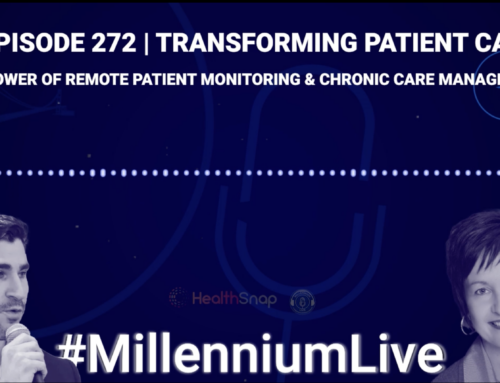






Leave A Comment
You must be logged in to post a comment.